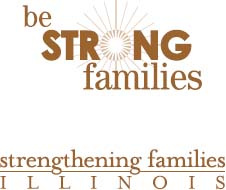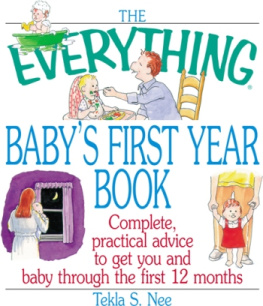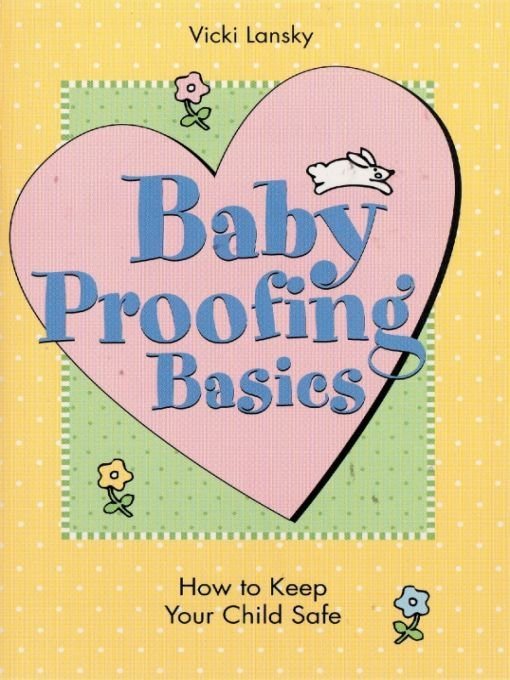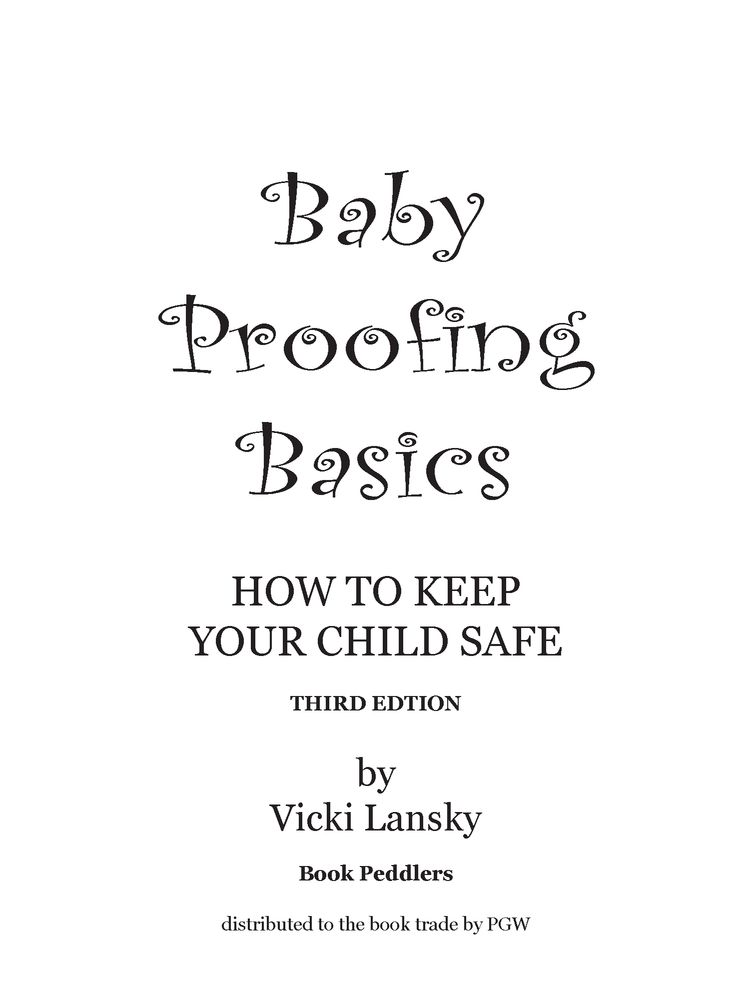Table of Contents
introduction
In the beginning there is a wonderful little, seemingly helpless baby who is basically immobile and reacts only to the stimuli of his or her environment. From your babys beginning days, you will quickly be thrust into the role of your childs protector. The world now becomes a source of learning as well as danger. And now forever you will either act or feel like protecting your child. And beginning from the time your child can turn over, your role will be very specific.
Birth to four months: While seemingly limited in mobility, babies can squirm, wiggle and even turn over, getting themselves into dangerous situations. Dont leave even the youngest baby unattended on a high surface, and check all corners he or she may be able to scoot into.
Four months to seven months: Babies begin to roll over, creep backward or even forward, sit up and put every possible object into their mouths. Theyre very interested in everything. Carefully monitor their environment!
Seven months to one year: Crawling, standing, walking and climbing developments make toddlers a moving menace to themselves. There is the danger of falls and of pulling heavy objects down on themselves. Anything may be ingested, so accidental poisoning becomes a real threat. Childproof thoroughly, then always be on the alert!
Up to five years: Running (and falling), curiosity with water, the ability to dismantle most anything, and the lack of fear makes children a real danger to themselves. Active children, without the understanding of the consequences of their actions, need to be monitored and watched, despite their apparent understanding of your words and warnings.
What we know to be true is that most accidents are preventable. We know, unfortunately through the tragedies of other families, where and what causes so many of these accidents. We must learn from the experience of others so we CAN protect our children. Thats what weve tried to share with you on the following pages. What you buy, where you put it, and how you use it are important lessons to learn. This knowledge, coupled with responsible surveillance of your children, will provide the best protection for the health and well-being of your family.
Eliminating common household hazards is one of the most important steps a parent can take to provide a healthier and safer environment for children.
Fortunately, we are not left to personal vigilance alone. The federal government has come to our aid through the efforts of the Consumer Product Safety Commission (CPSC) starting in the 1970s. It is an independent regulatory commission whose mandate is to protect the consumer from unreasonable risk of injury from products. If you have questions about product recall information, want to report a product injury, or report an unsafe toy or one that has caused an accident, call 800-638-CPSC (2772), or write to CPSC, 4330 East West Hwy, Bethesda, MD 20814. Their website www.cpsc.gov is a wealth of information. You can e-mail them at: info@cpsc.gov. CPSC also has an app for your phone to keep you up-to-date on product recalls.
The CPSC toll-free number offers some recorded messages on product safety when you call there. They are often seasonal in nature. The site also allows you to request their publication list of available reports on a large variety of topics. You can also speak to a hot line representative who can answers questions for you or send you information ranging from playground safety to Fireworks Facts. Spanish is also available. CPSC is anxious to answer any of your questions and help you to report the problems you have experienced with any variety of products.
The Juvenile Products Manufacturers Association (JPMA) is a trade association of American and Canadian companies that manufacture and/or distribute infant products. They are located at 15000 Commerce Pkwy, Suite C, Mt. Laurel, NJ 08054 (856-638-0420). One of this associations missions is to help consumers keep babies safe. In order to achieve this, JPMA initiated an extensive Safety Certification program in 1976 with an independent group the American Society for Testing and Materials (ASTM) to develop safety standards for high chairs, play yards, carriages, strollers, walkers, toddler beds and expandable gates and enclosures. Manufacturers seeking the JPMA safety seal submit their products voluntarily to be tested by Intertek Testing Services to see if they meet the tough standards established by ASTM. JPMAs website (www.jpma.org) also offers good safety information for consumers. There you will find a listing of certified products and manufacturers. Check the JPMAs website for various way to recieve information on recalled items.
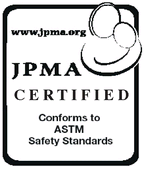
Millions of products are recalled each year because of hazards realized after-the-fact. Many items circulating in homes and garage sales are never accounted for. You can do your family a great service if you get in the habit of looking for recalled items in parenting magazines and places such as the CPSC site (www.cpsc.gov). You can also ask to be put on their mailing list for recalls at their on-line site. There is a page just for kids too. Safe Kids USA lists recalls on their site www.usa.safekids.org. Bookmark these web addresses and check them periodically.
Remember that not all problems with products are the fault of the manufacturer. Many mishaps and accidents occur because parents have not assembled a product correctly, have not read directions carefully, are using the product in the wrong way, are not properly supervising its use, or are unaware of its potential hazards. Unfortunately,
EVEN SAFE PRODUCTS CAN BE UNSAFE IF THEY ARE MISUSED OR USED INCORRECTLY.
Reading this book cover to cover will make you wonder if you and your child will ever make it through childhood safely. This information can make the task seem overwhelming. It is not. But the odds are that one maybe two or three situations in this book may come up for you. But you must read through all the possibilities just to raise your awareness. It takes only one moment one overlooked moment to put your child in danger and change your life forever. You dont want to wake up some morning and say to yourself, Why didnt someone warn me?
This is your chance to alert yourself and your family to the potential dangers in the world around you in order to keep your family safe. Please take this opportunity to do so.
Vicki Lansky
CHAPTER 1
Baby Proofing Room by Room
Accidents, not illnesses, cause most child deaths approximately 400 children less than four years old die of accidents every month in the United States. The major causes of death or injury to children under age 14 are car accidents, burns, drowning, falls and choking/poisoning.
Two major elements are involved in keeping your child safe from harm in your home. First, careful, thoughtful childproofing of every room in the house. And second, your constant, loving vigilance. Never underestimate the powers of a child. I didnt think she could do that, is the tragic cry of many parents of bright, curious children who were only investigating their environments.


